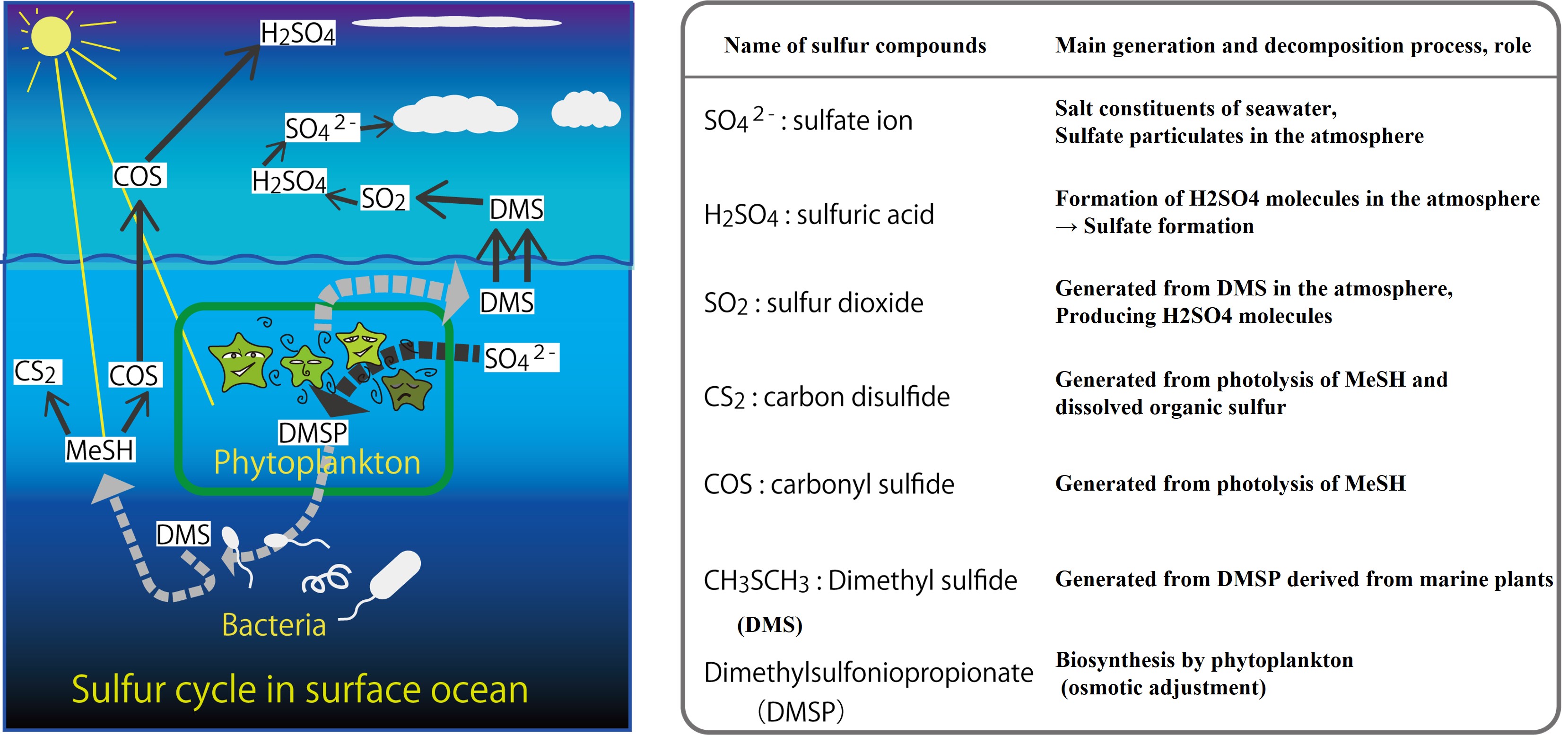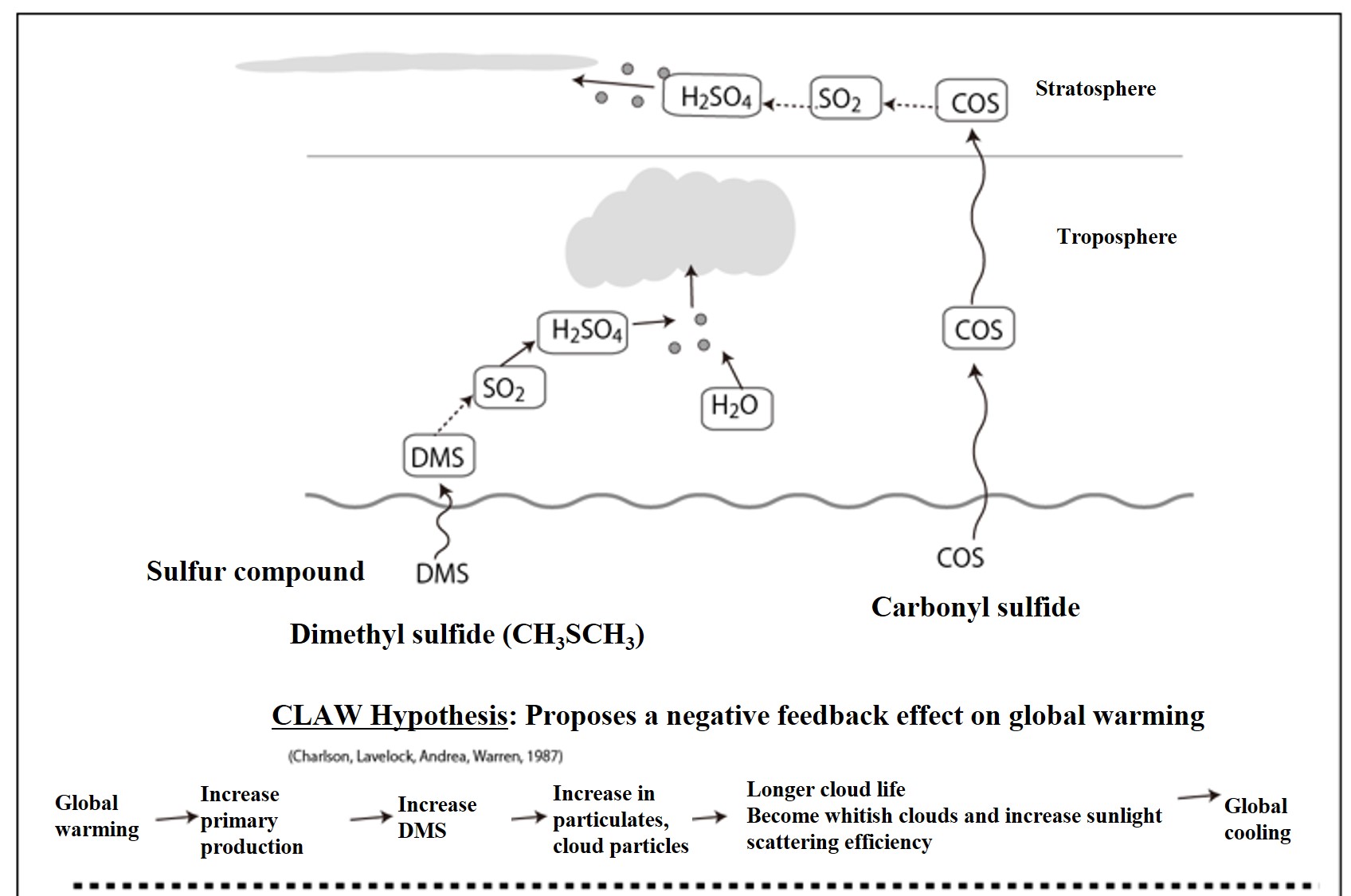Organic Sulfur Gas and the CLAW Hypothesis
Rangkaan topik
-
-
Marine plants use SO42- ions in seawater to biosynthesize DMSP, which is used for osmotic adjustment. DMSP decomposes to DMS. When released into the atmosphere, DMS becomes a source of sulfate particles. In seawater, DMS becomes methanethiol (MeSH), which further photolyzes to COS and CS2.

-
The CLAW hypothesis, proposed by Charlson, Lovelock, Andreae, and Warren Nature (1987), proposes that warming produces a cooling effect by causing marine plants to release DMS, a type of organic sulfur gas.
① As the Earth warms,② photosynthesis by marine plants becomes more active.
③ More marine plants increase DMS production by marine plants, which increases DMS release into the atmosphere.
④ As DMS release into the atmosphere increases, the amount of DMS-derived sulfur dioxide and sulfate particulates increases.
⑤ As the number of DMS-derived sulfate particles increases, the number of particle nuclei (cloud nuclei) that grow into cloud grains increases.
⑥ As the number of cloud nuclei increases, the size of each cloud particle decreases.
⑦ As the size of each cloud particle decreases, the rate at which clouds reflect sunlight (albedo) increases. The frequency of rainfall as rain decreases, so cloud dwell time increases.
⑧ The increase in cloud albedo and the increase in cloud dwell time will create a cooling effect near the earth's surface.
The series of events ①→②→・・→⑧ are proposed as the Earth's own climate-moderating functions.

-
Robert J. Charlson, James E. Lovelock, Meinrat O. Andreae & Stephen G. Warren, Oceanic phytoplankton, atmospheric sulphur, cloud albedo and climate, Nature, 326, pages655–661(1987).
A nature journal is chargeable. Since Hokkaido University has a contract, you can download it by accessing it from Hokkaido University. -
Dimethyl sulfide (DMS) produced by marine biota undergoes an oxidation reaction in the atmosphere to produce sulfuric acid aerosol particles that become cloud condensation nuclei (CCN). Changes in DMS release can affect the Earth's radiation budget. This section summarizes the issues involved in this research.
-
